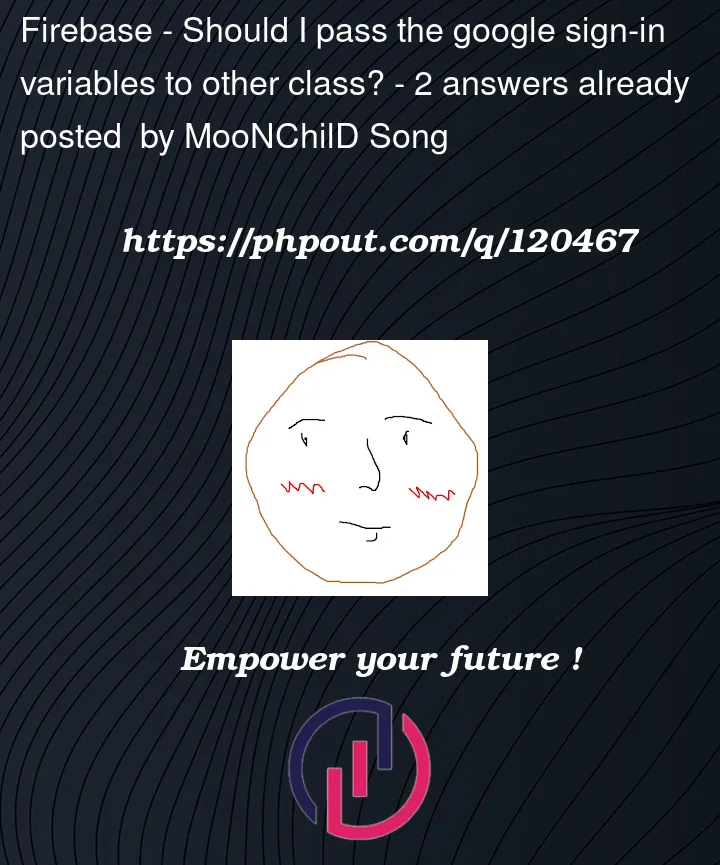I made a log-in page and made a button for google log-in like this :
Future<String> login_google() async{
FirebaseAuth auth = FirebaseAuth.instance;
GoogleSignIn googleSignIn = GoogleSignIn();
GoogleSignInAccount? account = await googleSignIn.signIn();
GoogleSignInAuthentication authentication = await account!.authentication;
AuthCredential credential = GoogleAuthProvider.credential(
idToken: authentication.idToken,
accessToken: authentication.accessToken);
final authResult = await auth.signInWithCredential(credential);
final user = authResult.user;
print (user?.uid);
print (user?.email);
print('google log-in completed');
return Future.value(user?.uid);
}
...
class _login_pageState extends State<login_page> {
@override
Widget build(BuildContext context) {
// String uid_r = await login_google();
return Scaffold(
appBar: AppBar(
backgroundColor: Colors.white,
toolbarHeight: 1.0,
),
body:Column(
mainAxisAlignment: MainAxisAlignment.center,
crossAxisAlignment: CrossAxisAlignment.center,
children: [
Image( image: AssetImage('asset/logo.png'),),
ElevatedButton(onPressed: (){
login_kakao();
Navigator.of(context).push(MaterialPageRoute(builder: (context) =>main_bone(uid:'')));
}, child: Text('Kakao Log-In')),
ElevatedButton(onPressed: (){
// login_kakao();
final uid = login_google().then(
(value){
Navigator.of(context).push(MaterialPageRoute(builder: (context) =>main_bone(uid: value))); => The button for LOG-IN .
}
);
}, child: Text('Google Log-In'))
],
),
);
}
}
Here I succeeded in log-in and passed only uid thinking that only uid is required. And My firestore rules for accessing is following :
match /post/{document=**}
{
allow read;
allow write:if
auth.uid != null;
}
On the next page, None of the data in collection(post) were shown, which means the log in has disabled on the next class .
Should I pass the whole variables for authentication to next class, for example, auth, credential ?




2
Answers
its called inherited widget, there is a lot method to make your entire app authenticated, not just one class. make a stream builder, listen
firebase_auth.authStateChanges()or you can use a package ( state management ) :
like
flutter_bloc
or
i prefer goRouter
check this video, its chris itself explain how to use it, its even better; work at flutter web too
take look at mine for your reference :
auth repo class : —->
You should be able to access all the data for the current user using
FirebaseAuth.instance.currentUser. Use that to access the current user and pass any data to backend using that user’s credentials and token.